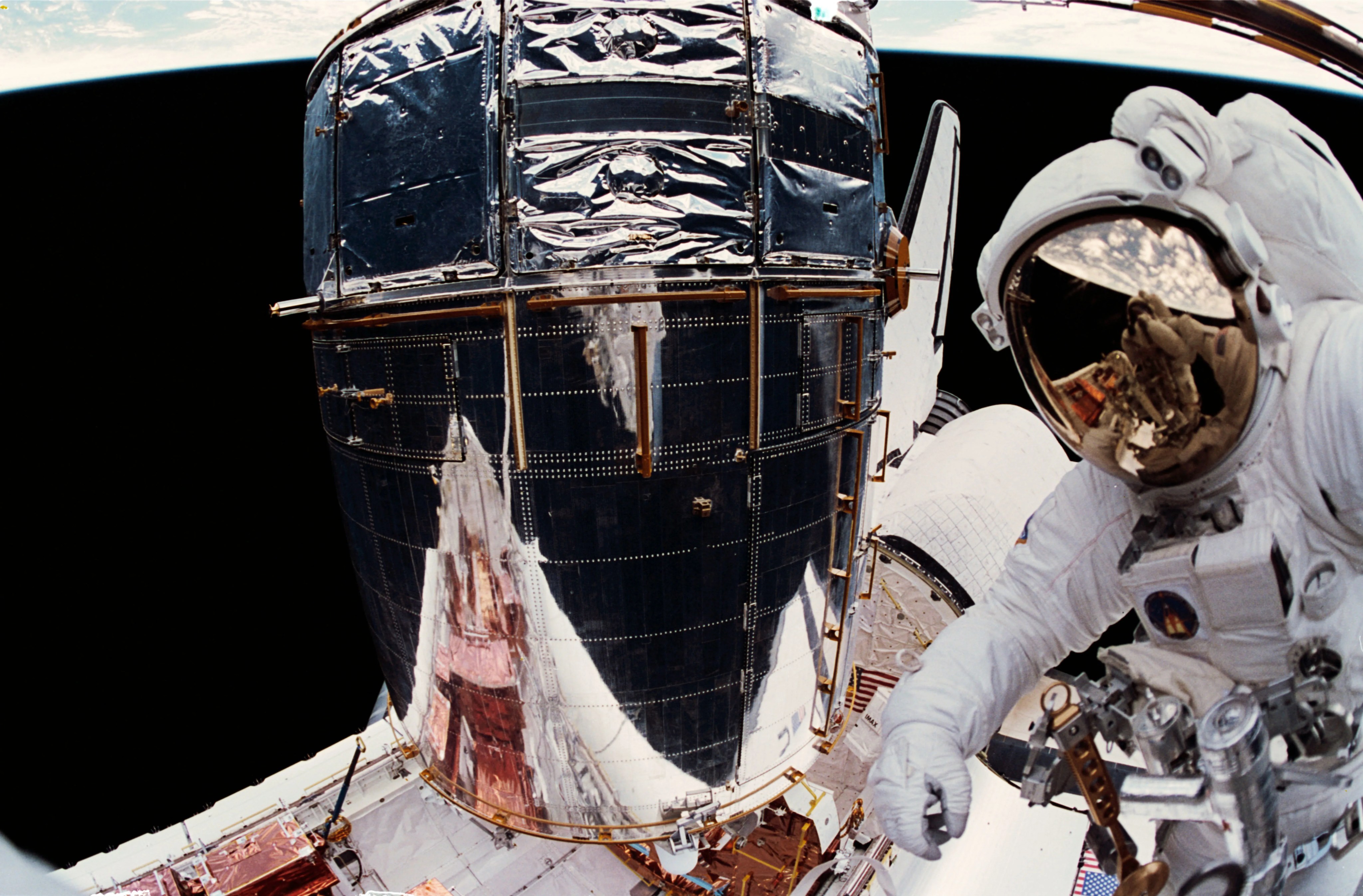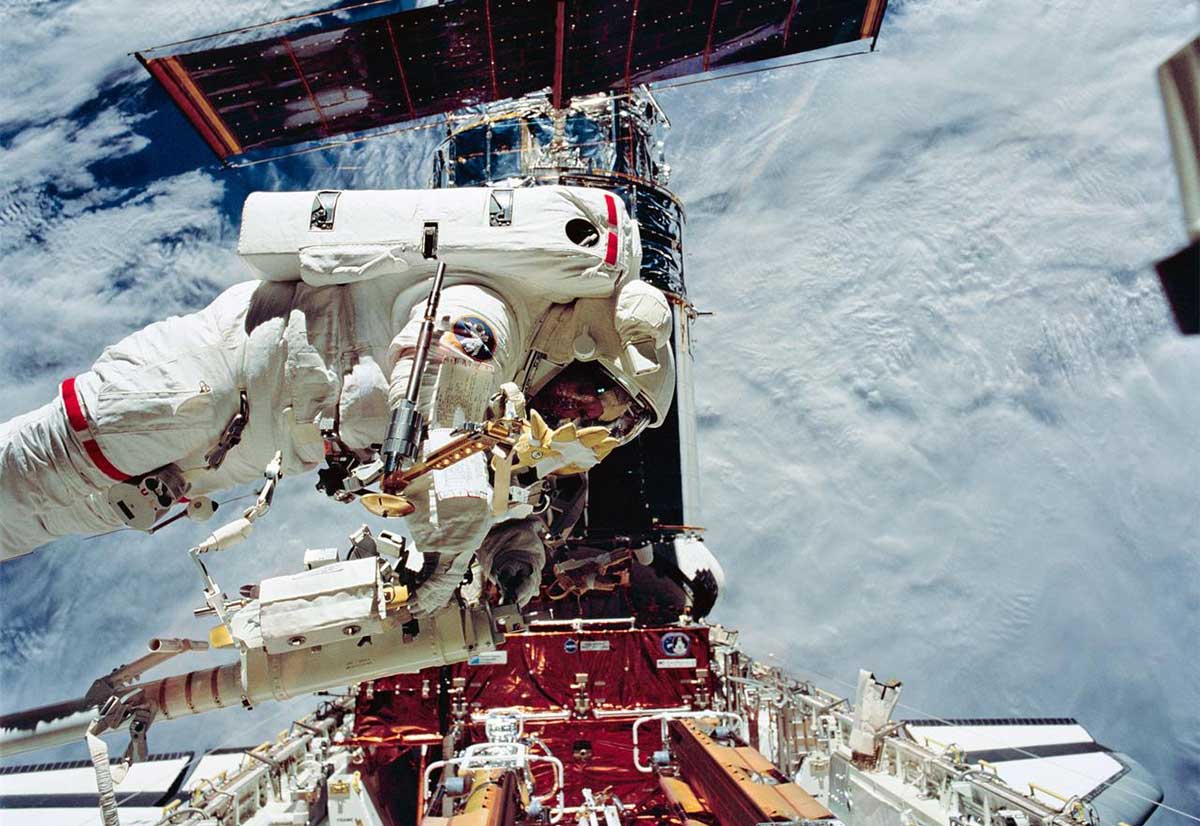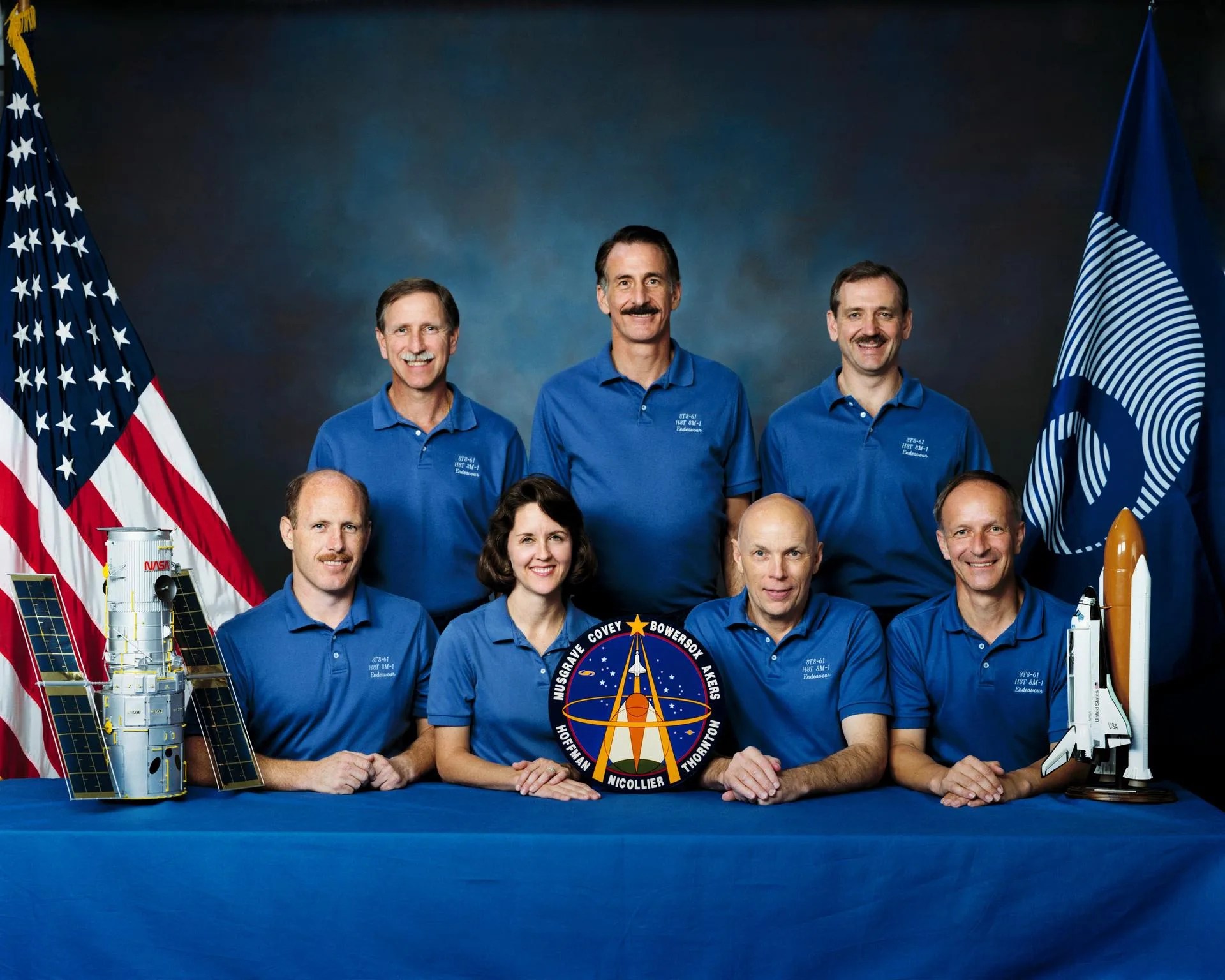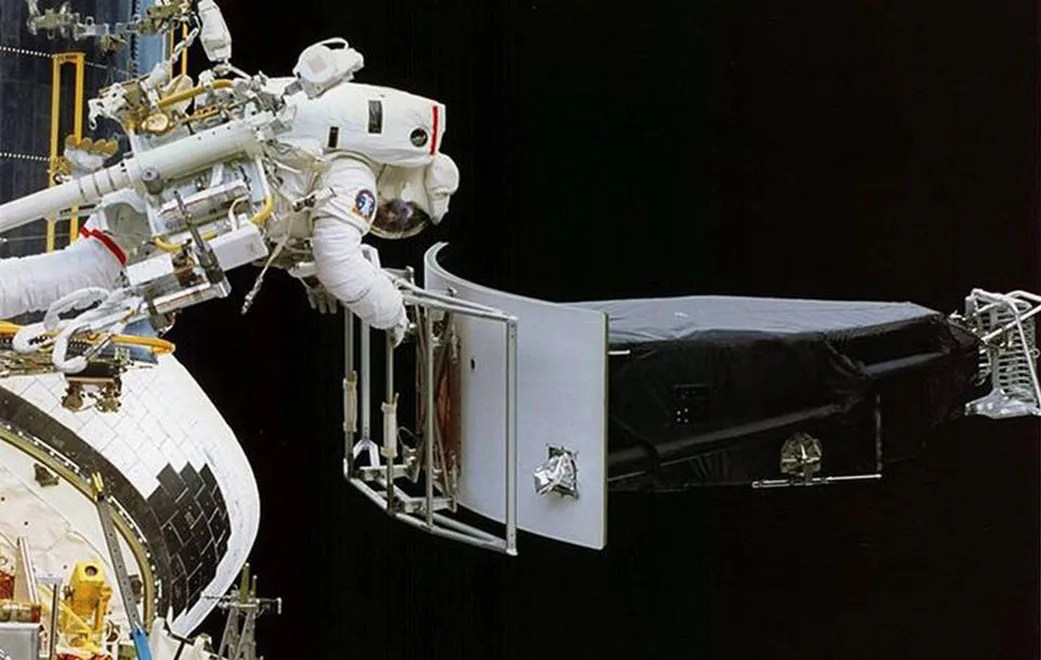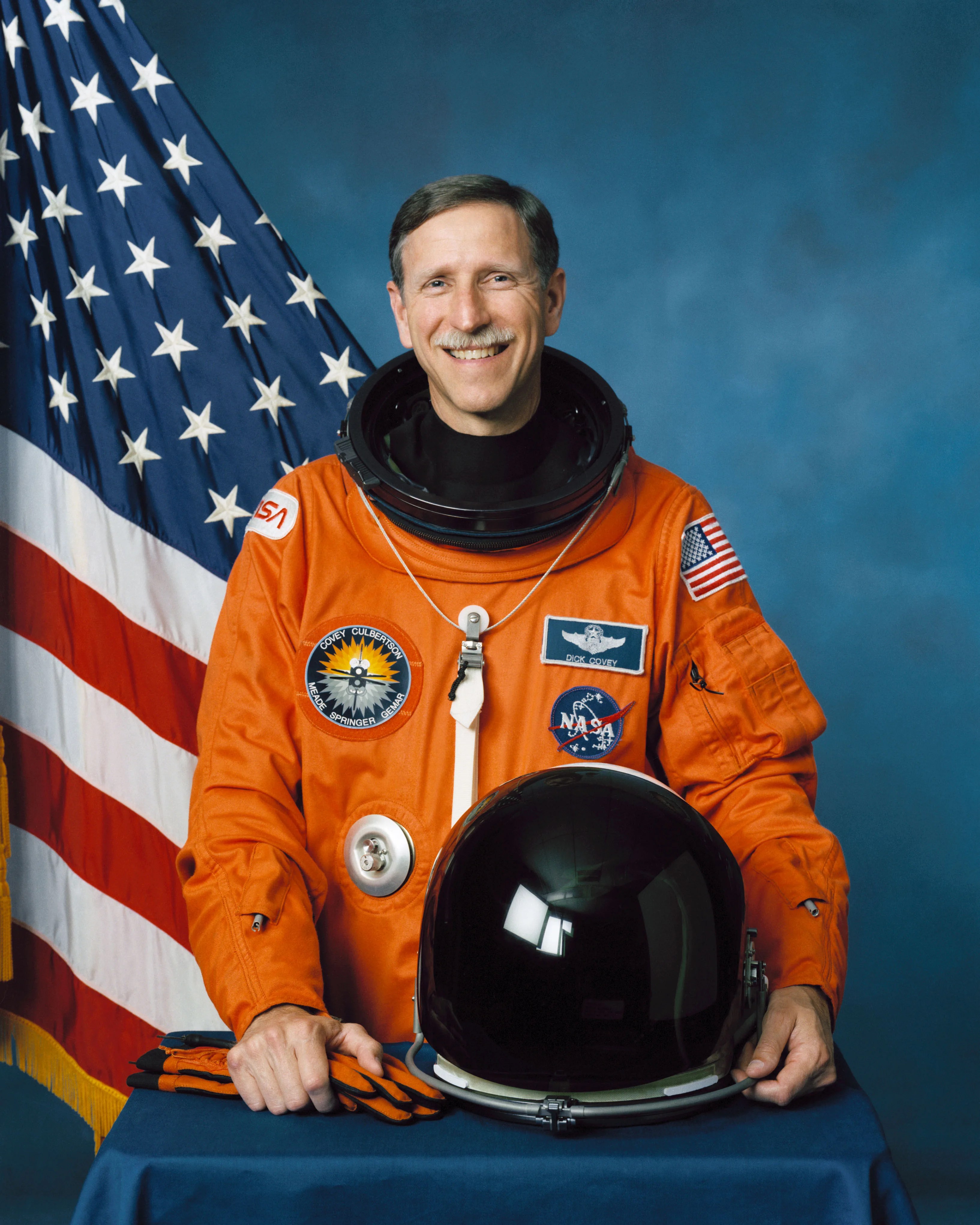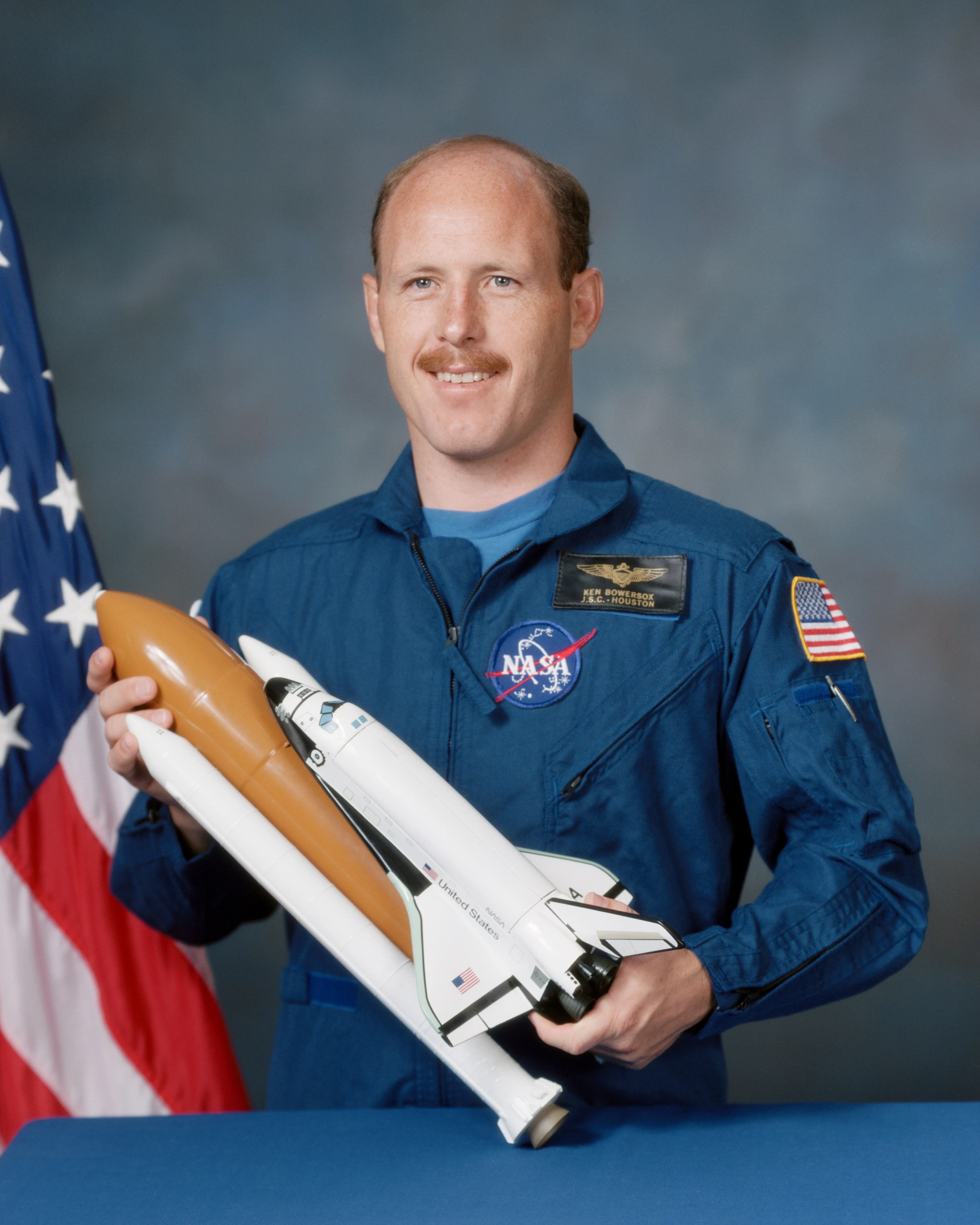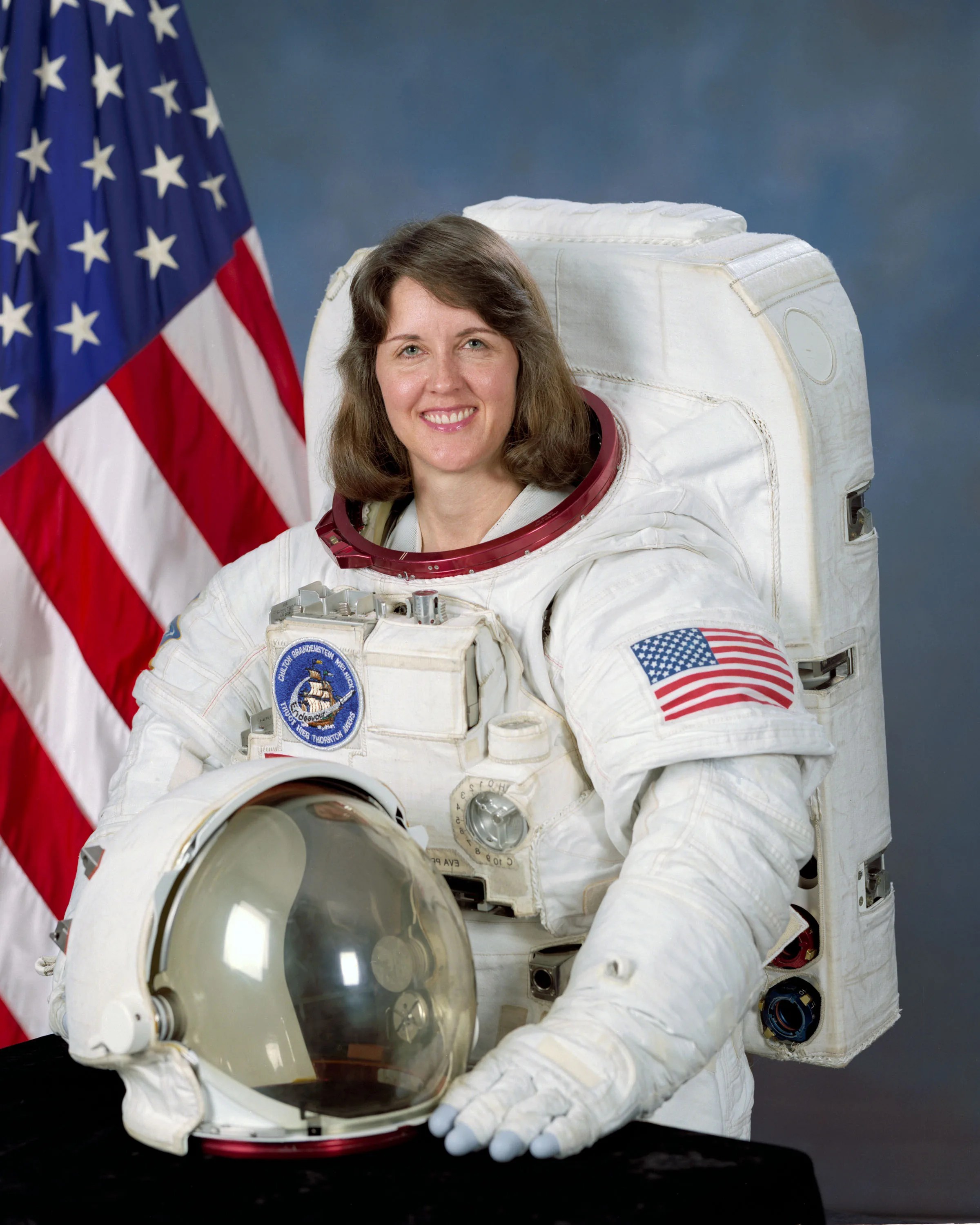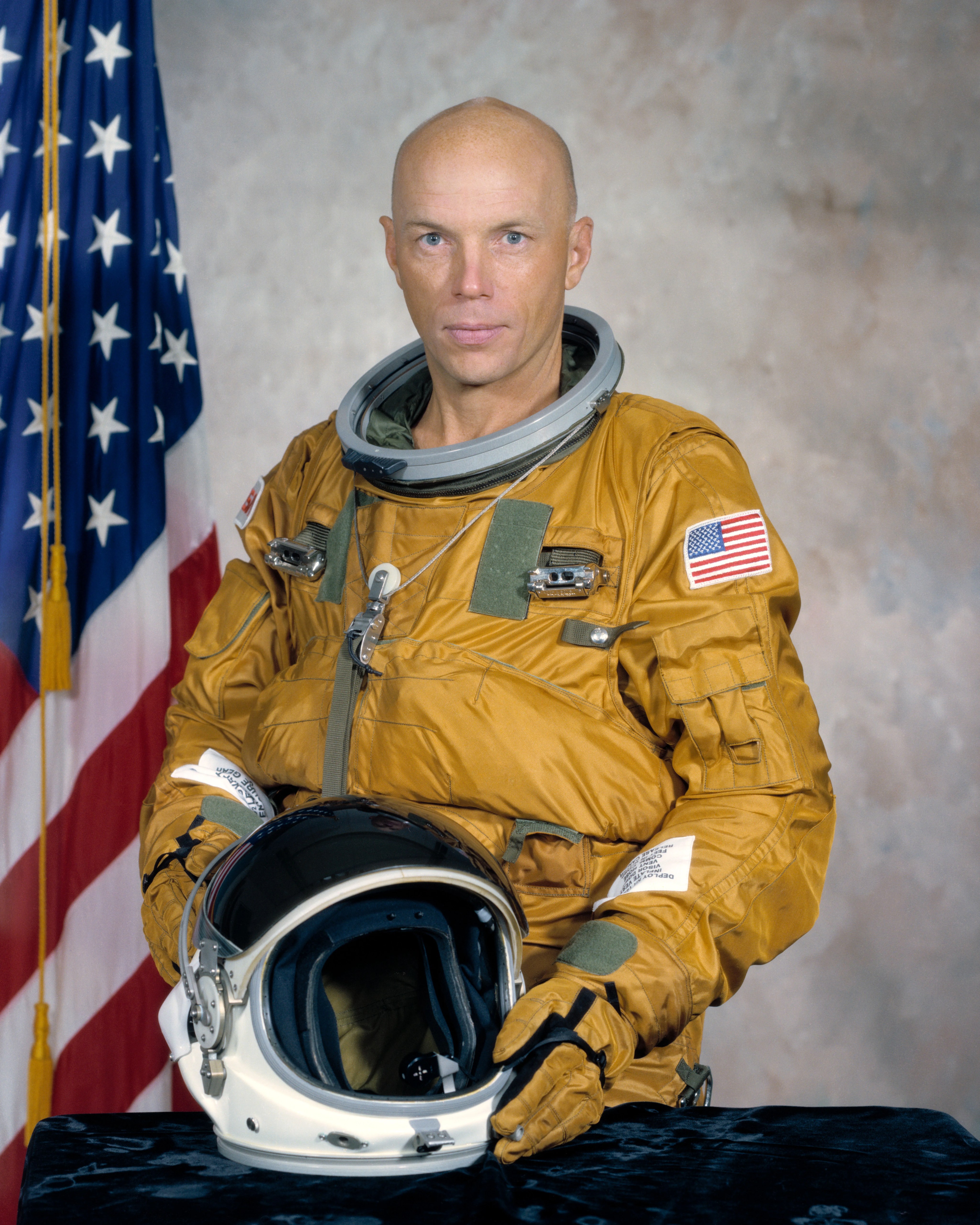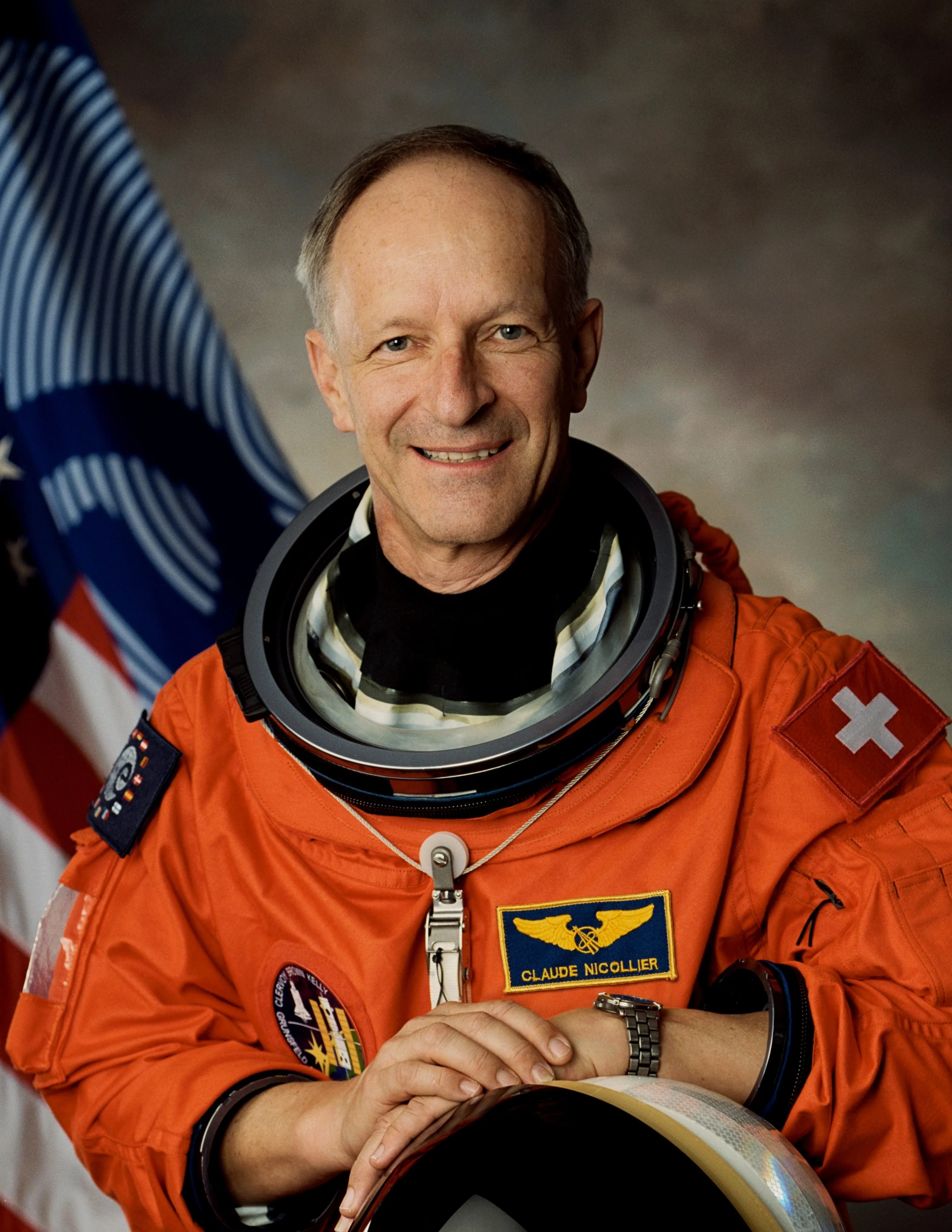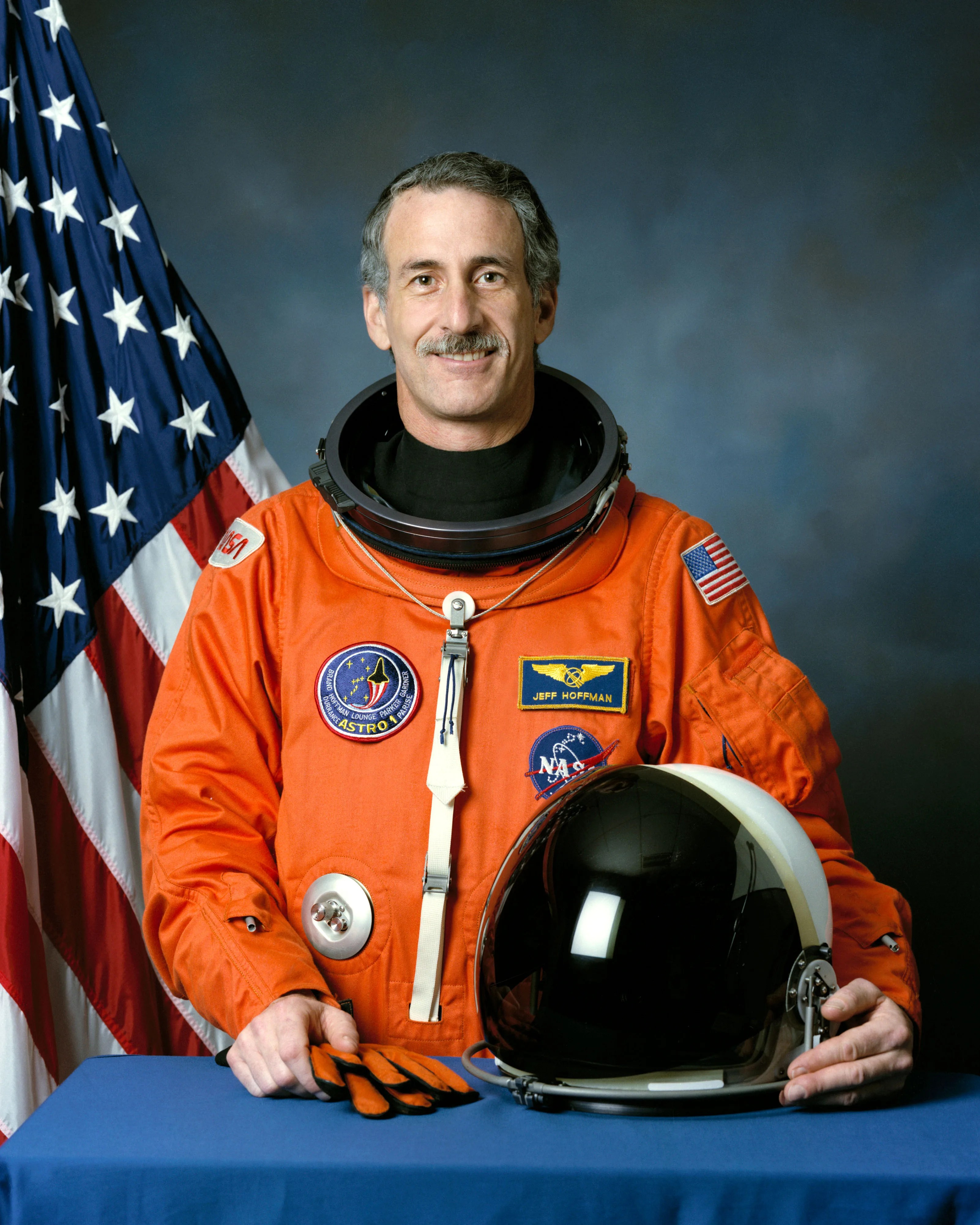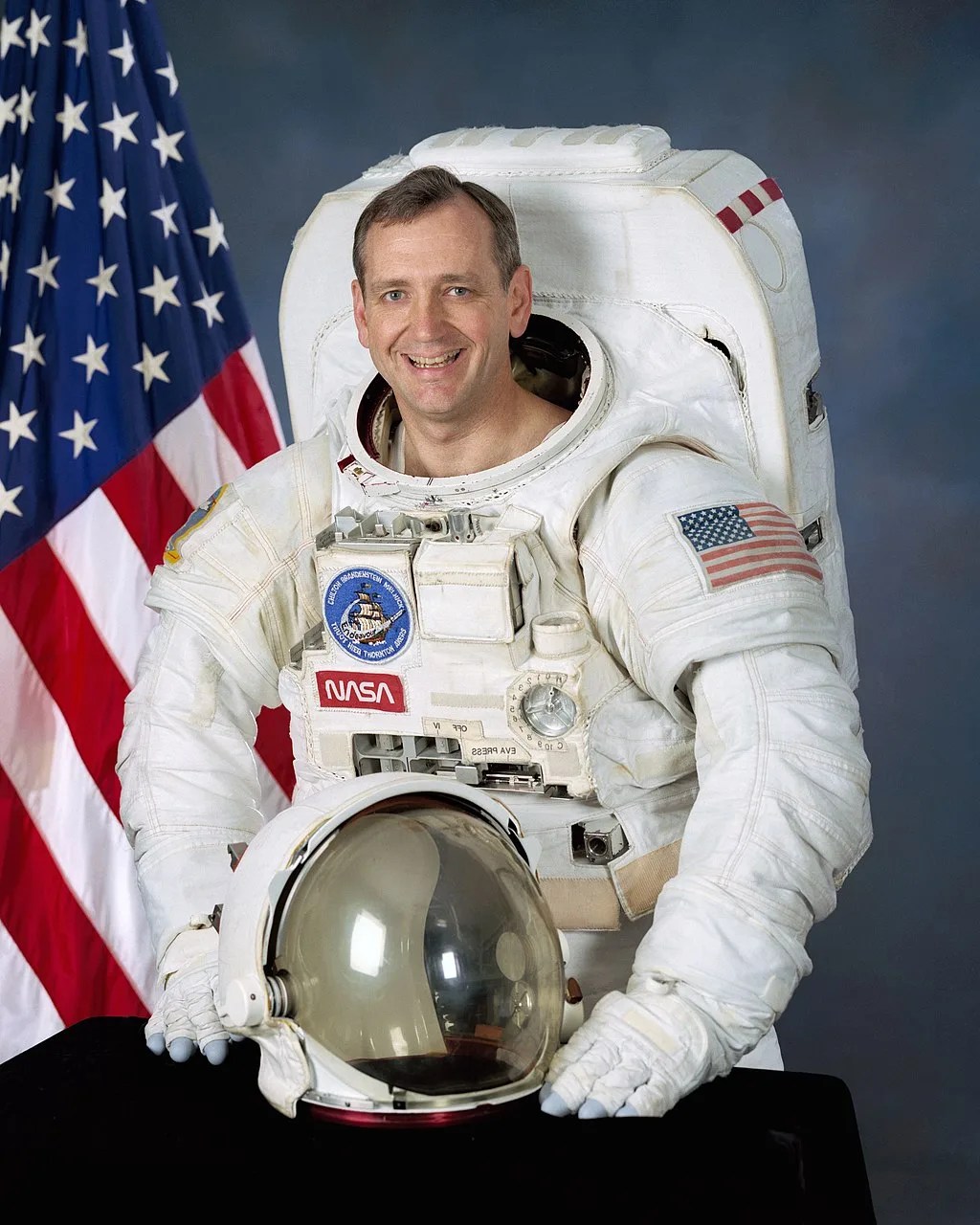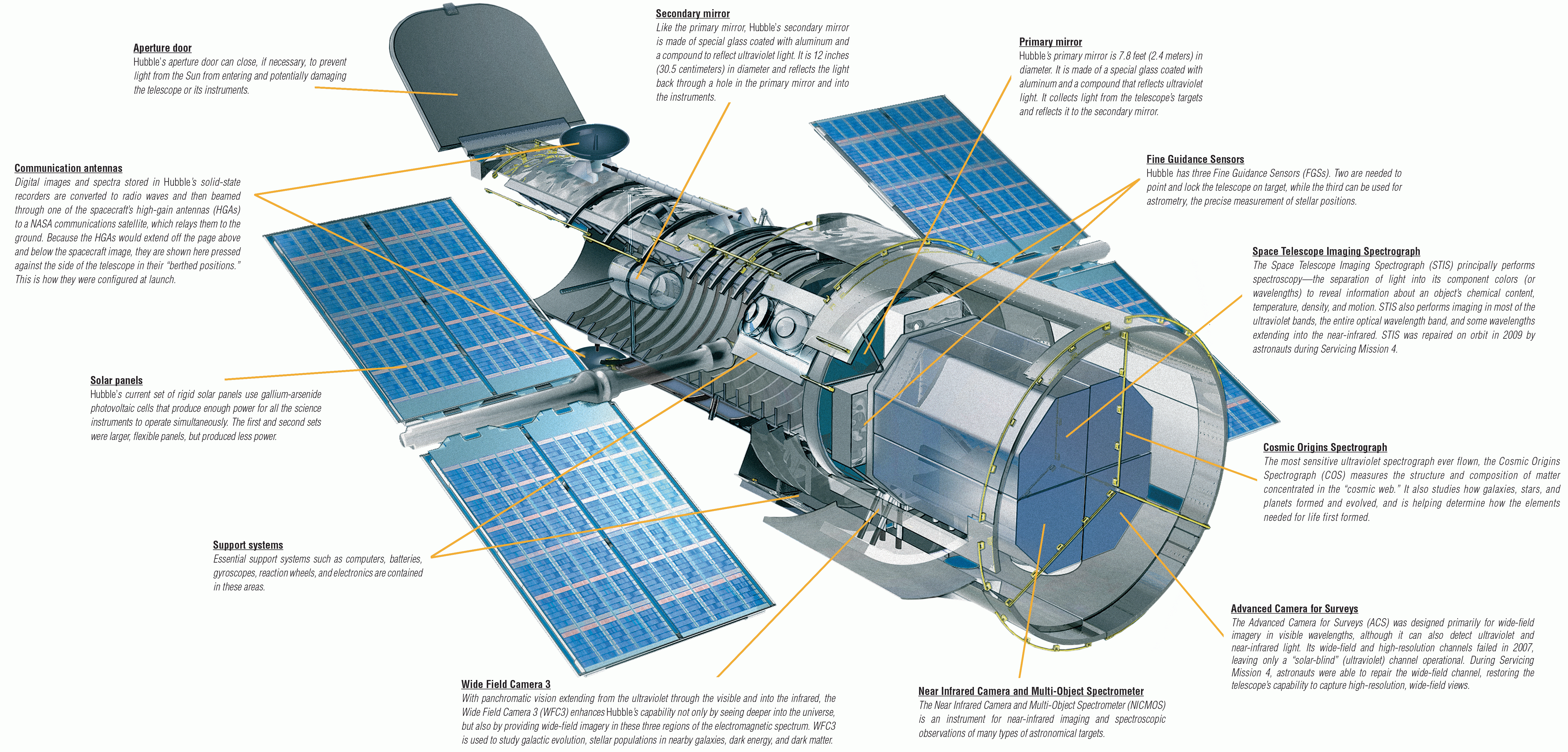Servicing Mission 1
(SM1)
SM1 was NASA’s first opportunity to upgrade the telescope and correct the flaw in the primary mirror.
mission type
Servicing Mission
shuttle mission
STS-61
Launch
Dec 2, 1993
duration
10 days
Overview
Shortly after its 1990 deployment, NASA discovered a flaw in the observatory's primary mirror that affected the clarity of the telescope's early images. Fortunately, Hubble’s design allowed astronauts to perform repairs, replace parts, and update its technology with new instruments while in orbit. Servicing Mission 1 was the first opportunity to install corrective optics that counteracted the primary mirror’s flaw, add new instruments, and conduct planned maintenance on the telescope.
Quick Facts
- Number of Orbits: 163
- Miles traveled: 4.4 million
- Space Shuttle: Endeavour
- It took five back-to-back space walks totaling 35 hours and 28 minutes to complete Hubble’s first servicing mission
Hubble's Mirror Flaw
Shortly after the Hubble Space Telescope's launch in 1990, scientists and engineers discovered that the observatory's primary mirror had an aberration that affected the clarity of the telescope's early images.
Learn More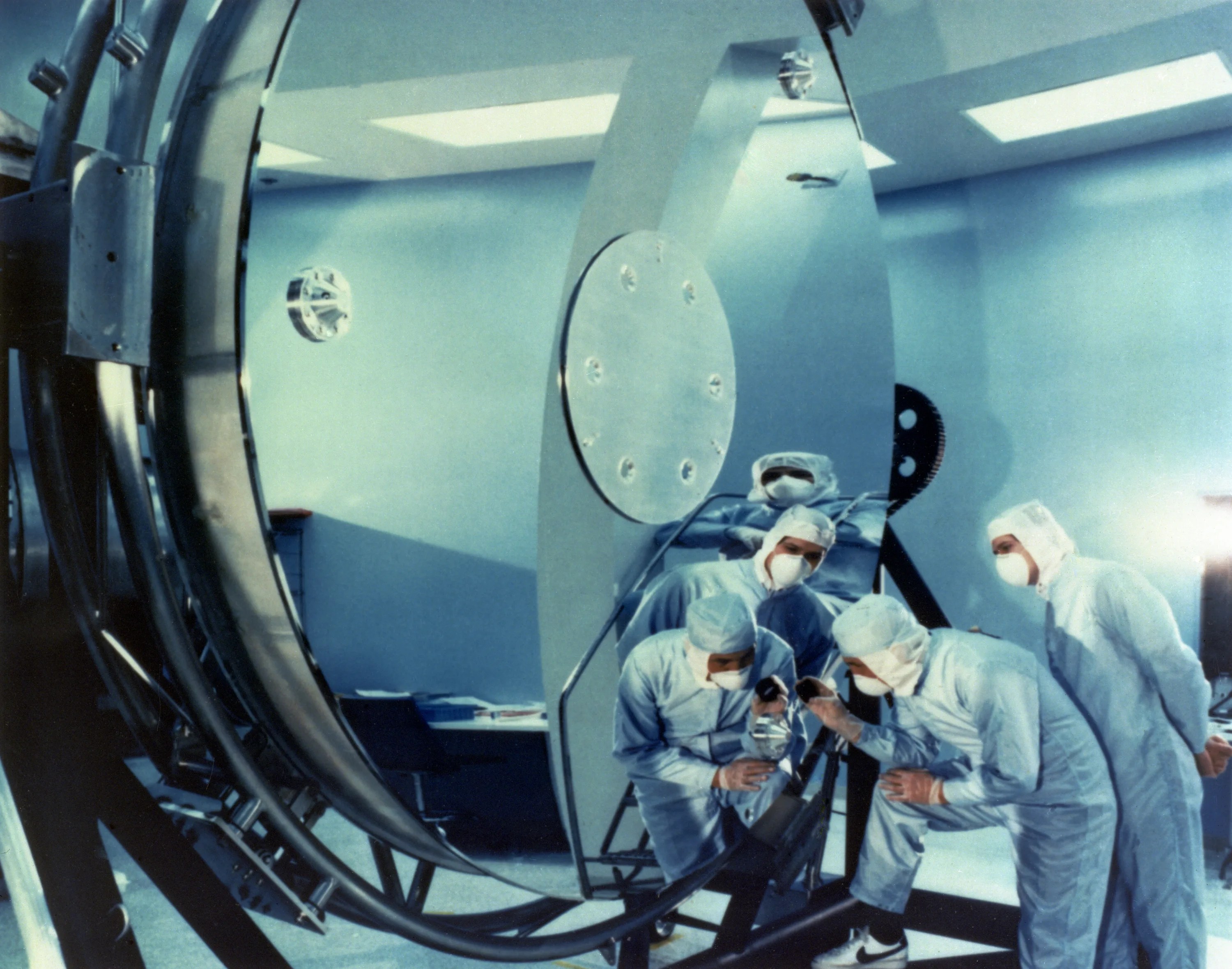
Wide Field and Planetary Camera 2
Flattened by a depth of 2.2 microns (roughly equal to one-fiftieth the thickness of a human hair), the outer edge of Hubble’s main mirror was ground to the wrong specification by the contractors who built it, an error called spherical aberration. Instead of focusing incoming light to a single point, Hubble had multiple foci that made the telescope's first images look fuzzy.
Once NASA learned of the error, scientists and engineers set out to solve the problem. The Wide Field and Planetary Camera 2 (WFPC2) was being assembled at the time. WFPC2 was a backup for the Wide Field and Planetary Camera 1 already on Hubble, and the individuals working on the project were confident they could rework the camera's internal optics to compensate for the primary mirror's error. They added optical components that brought light into focus, counteracting the mirror's flaw in a way similar to how eyeglasses correct vision problems. The installation of WFPC2 during SM1 significantly improved Hubble’s performance and sensitivity at ultraviolet wavelengths. Hubble’s most used instrument for many years, WFPC2 produced more than 135,000 stunning images of the universe.
WFPC2 recorded images through a selection of 48 color filters that covered a spectral range from the far-ultraviolet to visible and near-infrared wavelengths. Along with its advanced detectors, WFPC2 also had more stringent contamination control than WFPC1. An L-shaped trio of wide-field sensors and a smaller, high-resolution camera were the heart of the instrument.
Astronauts replaced WFPC2 with the Wide Field Camera 3 (WFC3) during Servicing Mission 4 in 2009. Today, WFPC2 is part of the Smithsonian National Air and Space Museum’s collection in Washington, DC.
Wide Field Planetary Camera 2 Facts
Instrument type | Camera |
Weight | 281 kg |
Dimensions | 0.8 m x 2.2 m x 2.0 m |
Field of view | 2.7 arcminutes |
Wavelength range | 2.7 arcminutes |
Hubble's 30th Anniversary of Servicing Mission 1
Celebrate the 30th anniversary of the mission that brought Hubble's view into focus. Experience the urgency, tension, and resolve through the eyes of seven key figures who helped make the mission a success.
Click the three lines (upper right) to view the rest of the videos in the series.
COSTAR
WFPC2 wasn't the only instrument on Hubble that analyzed light. To bring light to a focus for these other instruments, engineers at NASA and Ball Aerospace developed the Corrective Optics Space Telescope Axial Replacement (COSTAR). COSTAR was a telephone booth-sized instrument that placed five pairs of corrective mirrors, some as small as a U.S. nickel coin, on deployable arms to send corrected light to Hubble's other instruments, including the Faint Object Camera, the Faint Object Spectrograph, and the Goddard High Resolution Spectrograph. With the installation of COSTAR, all of Hubble's scientific instruments received focused light.
Every new instrument installed since Hubble’s initial deployment includes built-in corrective optics that correct for the primary mirror’s spherical aberration. When the Advanced Camera for Surveys replaced Hubble’s last first-generation science instrument, the Faint Object Camera, during Servicing Mission 3B, COSTAR became unnecessary.
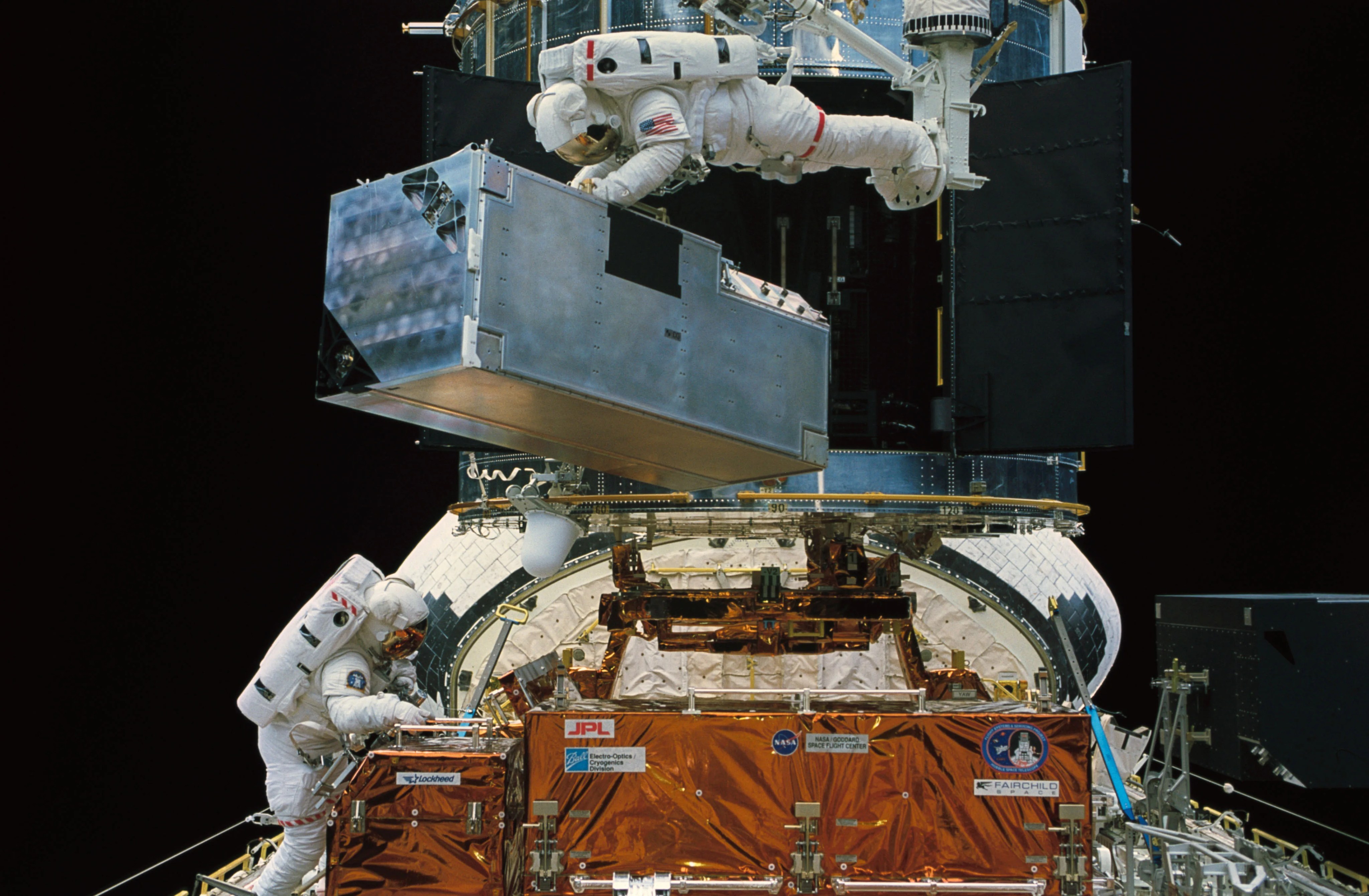
Servicing Mission 4 astronauts removed COSTAR in 2009 and installed the Cosmic Origins Spectrograph in its place. COSTAR was returned to Earth, and like WFPC2, is part of the Smithsonian National Air and Space Museum’s collection in Washington, D.C.
Ball Aerospace in Boulder, Colorado built COSTAR. Tinsley Laboratories of Berkeley, California made its corrective mirrors.
Additional Upgrades
Because Hubble was designed for servicing in space, many of its subsystems are modular, standardized, and accessible. Hubble has 49 different modular subsystems designed for servicing. These range from small fuses to large scientific instruments like WFPC2. More than 200 tools, from screwdrivers to hardware designed specifically for Hubble servicing, were available to the astronauts on SM1.
One of the top servicing tasks for SM1 was replacing Hubble's solar arrays. These solar panels experienced excessive flexing caused by warming and cooling as the telescope moved in and out of the Sun's light. The change in temperature made the solar arrays oscillate, which caused a "jitter" of Hubble's line of site. This jitter resulted in the Fine Guidance Sensors to occasionally lose their lock on a target during science observations. The new solar arrays were designed to minimize this effect.
Another top servicing task was to replace some of Hubble's gyroscopes or gyros. Hubble has a total of six gyros packaged in pairs of two in instruments called Rate Sensing Units (RSU). At the time, Hubble required three gyros to point and track the objects it was studying. Three of the six gyros had failed by the time SM1 launched. SM1 astronauts replaced two of the RSUs.
The following is a list of components were installed or replaced during Servicing Mission 1:
- Solar Arrays
- Solar Array Drive Electronics (SADE)
- Magnetometers
- Coprocessors for the flight computer
- Two Rate Sensor Units
- Two Gyroscope Electronic Control Units
- Goddard High Resolution Spectrograph (GHRS) Redundancy Kit
- Wide Field and Planetary Camera 2
- COSTAR
Servicing Mission 1 Interactive Timeline
Meet the Hubble SM1 Astronauts
Servicing Mission 1 Gallery
Scroll through photographic highlights of the first servicing mission.
STS-61 Mission Facts
The final shuttle flight of 1993 was one of most challenging and complex manned missions ever attempted. During a record five back-to-back space walks totaling 35 hours and 28 minutes, two teams of astronauts completed the first servicing of the Hubble Space Telescope (HST).
Explore STS-61 Details